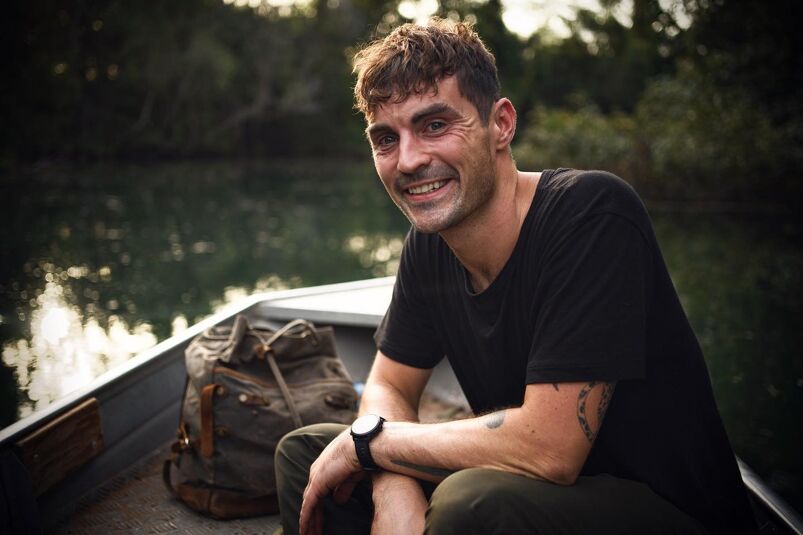
For all you size queens out there, the incredibly hot (and gay!) explorer, biologist, conservationist and filmmaker, Dan O’Neill, has a new show for you–and it’s a doozy.
Available starting May 18 on Curiosity Stream, the new wildlife docu series, GIANTS, takes humanity’s obsession with size into the animal kingdom. Each episode finds O’Neill heading into the wild to find the biggest beasts that walk our planet – from sharks, to elephants, lions, saltwater crocodiles and anacondas – oh my!
Ahead of the show’s premiere, Queerty sat down with O’Neill to discuss LGBTQ+ representation in the outdoors and what prompted him to come out, his experiences shooting in countries where it’s illegal to be queer, and which animals happen to be gayest of them all (literally)…
QUEERTY: I watched a few episodes of GIANTS last week. I’ll admit, I’m personally terrified of snakes and crocodiles, so I skipped those episodes. But one of my favorite parts was just watching you interact with the animals and kind of all the excitement and wonder that you exuded. What inspired you to want to study animals?
O’NEILL: I think it (happened) at a really early age. I remember when I was a kid, probably like five or six years old, this bird got caught in the classroom. And I was the kid that saved it, and set it free. And at school I remember that I was called the animal guy. And it was one of my earliest kind of identities, and I absolutely loved it.
But I also come from a family where science has kind of been held in quite a high regard. My dad was a physicist, turned programmer, which is very different to biology, but it’s kind of the same principles. I would try to impress him by completing maths books or showing him my capability with animals and things that I’d found out. And that’s kind of where it started. And then he and I ended up looking after animals together. We got tropical fish, marine fish, we started looking after reptiles, geckos, and eventually, him and I trained a hawk together when I was in my early teens. And it sort of all just went crazy after that. And I just became absolutely obsessed with wildlife.
(Eventually,) I became a biologist studying zoology, and then worked primarily in the Amazon, but also in the Yucatan, in Mexico, and across Southeast Asia as well. And then those two worlds joined when I started making films.

That’s incredible. Yeah, it’s cool that you got to blend your passion for animals, film and travel all into one job.
Yeah, it’s crazy. I can’t believe I get to do it. I really want to inspire more people to be able to feel like they can do it too, because when I was a kid, this is the kind of stuff that I wanted to do. I wanted to work with animals, I wanted to be an adventurer, I was obsessed with early explorers like Humboldt, and Shackleton.
But when I reached my early teens, and started to realize my sexuality was different to those around me–and I generally just was different to those around me–all those things that felt like jobs that I wanted to do, there was nobody queer doing those jobs. And there was no one in the media that I could see visibly, that was like me. And so, it felt like a fraudulent position for me to follow. And I was already trying to hide so much of who I was at that time. Had there been more representation, not only would it have been easier for me back then, but also, I think there would be more people doing this today.
And it is interesting, I had a situation a few years ago in the UK, where a TV exec had thought that I was gayer than she’d expected for an explorer role.
Really?!
Yeah. I was told by my management that this high-up TV professional had said, “Oh, he’s quite a lot gayer than we thought he was going to be.” And I remember then, instead of being like, “what a b*tch,” I was like, “Oh, my God, this is so my fault.” And I was like, ‘Why did I go into that room? Why did I do that?’ When in actuality, it was just that she had this image of what an explorer was, and it wasn’t a gay person.
But yeah, I think it’s exciting that this show is now able to not just highlight me in it, but loads of queer scientists. Had you watched the crocs episode, you would have seen the badass Sebastian Groh, who happens to be trans and is one of the world’s leaders in ancient crocodilians, and one of our major contributors in the episode.
Oh my God, well, maybe I’ll face my fears and watch that episode, because I would love to see the representation. Going back, you talked a little bit about how it was hard for you because you didn’t really have anyone to look up to who was queer. Was there a moment that made you just say, ‘f–k it, I’m just gonna do this, whether people like it or not’?
I think there are probably two sides to that. I’ve always been a little bit like, “I’m going to do it anyway.” And I get that from my mum. She’s so like, it’s her way or the highway. Which has been great. I mean, I never had to come out to my parents because my parents are so chill. People talk about generational stuff, right? My parents are quite a lot older. They’re in their mid-70s now. My mother was in the Woodstock era. She was a flower hippie and she has been the most amazing person about my sexuality to the point where I never came out… She knew earlier than I did. And I guess that lit a fire under me to help me feel like I can do stuff.
But (the pivotal) moment for me was when I just got back from an Amazon expedition with a few of my indigenous friends. I’d done a 300-mile expedition in the middle of the Amazon and got really close to a wild rainforest Jaguar. And I’d filmed the whole expedition on my own, I’d set it all up on my own, and I came back and I was like, “I’m so much more capable than that lady had said I was.” I just, in that moment, I was like, “You know what, I need to start talking about this more.” And that’s when I started. I wrote an article for the Independent in the UK, and started talking more openly about the fact that there is no representation.
What kinds of reactions have you received from people in the community who have seen what you’re doing when it comes to LGBTQ representation in the outdoors?
I mean, it’s massive, it’s huge. As soon as I say anything related to, you know, discrimination in the outdoors, against queer people, or something about how queer people aren’t seen as adventurous or brave, I get messages from people all over the world on social media.
I had a message from somebody who’s studying a very critically endangered animal, in a country where it carries the death penalty for homosexuality. And the message was basically saying, “I’m so glad that you’re talking about this. I’m studying this animal, and I can’t be who I am in this country, until laws are changed, and it’s going to take, you know, people standing up for our rights and loads of different sectors to change those laws.”
I think a lot about what’s the moral value of doing something. And I think there’s a lot of moral value in getting more representation for queer people in the outdoors, especially in adventure, because I think there’s so many stereotypes associated with that that are absolutely false. We are so multifaceted, just like every other person in the world.
Exactly. And so, have you seen an evolution in terms of acceptance? Obviously, you travel a lot, maybe to countries where homosexuality is illegal, or unwelcome. Have you seen a shift in terms of more people being accepting?
100%. I mean, when I started working with Off the Fence (a production company) to produce GIANTS for Curiosity Stream, we had conversations early on about the fact that one of our major shooting locations was Kenya, which has a life imprisonment, or many years in prison, for homosexuality. And we decided early on that we were going to tell everyone in the locations we were going to before we arrived, to make sure they were okay with it, rather than them finding out on-location, and something potentially going wrong… and when we got to Kenya, most of the people that we spoke to, just like everywhere in the world, were pretty accepting. And those people follow me on social media, we talk all the time, we stay in touch. They’re really cool guys.
But on top of that, I’ve been going to Guyana, in the north of South America, for 10 years. It’s the last country in South America where it is actually illegal to be gay.
For years, I didn’t come out and didn’t tell anyone about it, in fear that the country I loved would become inaccessible to me. But after all of this stuff started to come out (about me being gay), my colleagues noticed and when I started telling people in Guyana (about my sexuality), I was met with, “Oh my God, we love gay people here.”

Aww!
I know, right? And to realize that there’s a rich, indigenous community with people looking after LGBT rights, which you don’t hear much about, it’s so cool… And also there are out LGBT people in the Guyanese government.
And actually, so much of these things around the world are actually (a result of) archaic colonial laws brought by the British, and the Guyanese have these laws imposed on their country by us from the past.
So, I’m excited about the prospect that the world seems to be changing. And in certain parts of the world where it’s not so great–like the UK is not doing great at the moment and the US is having some issues–there are places around the world where it is getting better.
Yeah, it gives me hope to hear that, because I feel like you hear about all these countries, where it’s like, ‘well, you shouldn’t go there if you’re gay.’ But it sounds like to me that there are pockets of people that are trying to change those laws and do some good. So that’s super awesome.
100% Yeah, definitely go to Guyana. It’s the best country in the world.
Join biologist and wildlife conservationist @DanONeill_Wild as he tracks down the planet’s biggest animals in this upcoming five-episode epic! 🌎 #Giants pic.twitter.com/apSKiM16d7
— Curiosity Stream (@CuriosityStream) April 1, 2023
Yes, I’ll add it to my list. So, moving on to GIANTS. In the show, you explore all kinds of different beasts from lions and sharks to crocodiles. What would you say was your favorite part of doing the show?
I mean, the whole process was dynamite. I mean, it was so many firsts for me. I’d never actually seen a wild African elephant. So the first episode we shot, was the elephants episode. And I can tell you: just walking up, on foot, to one of the last, you know, 20 to 30, Super Tuskers left in the world, is an experience that not many people are going to have… But it is just a really incredible experience seeing an animal that big, and realizing that we have that, and that is alive on our planet. It’s just mind blowing.
But really, it was just the sheer difference of every single expedition. Every one had its own hair-raising moments: the lions camping out in the Okavango, under the incredible stars with basically no light pollution, hearing hyenas howling around us at night and lions and all the animals and just being in a tent with no other protections. It’s absolutely epic. Then to go out to the NASA Neptune islands on the south coast of Australia to dive with great white sharks. So many things I’ve always wanted to do as a biologist that this program has allowed me to do, and meeting so many incredible scientists along the way. Many of whom were queer, and that made it so much easier.
I know when I was watching the great white shark episode, I really admired how you were very frank, in terms of talking about how (these sharks) were a fear of yours because a lot of times when I think of zoologists, or people that work with animals, I just assume they’re not afraid of anything!
I definitely am afraid of lots of things. I’m terrified of spiders. Honestly. I deal with them all the time. And I’m in the jungle all the time. If you shine a light on the jungle, you just see billions of little spider eyes.
But I love facing my fears. I think part of how I’ve come to terms with myself and my self-love comes from facing my fears and conquering them. And I just know the animals aren’t going to attack me. I know as a biologist that they’re not there to hurt you. A great white shark isn’t interested in you, the only reason it would ever attack a person is mistaken identity, or hunger because there’s not enough food around. And anacondas, it’s exactly the same. It’s never going to attack a person.
You didn’t see this because you didn’t watch the episode, but at the very end, I got in the water with an anaconda.
Oh my god!
I was about three feet from its head, and that was an absolute fear of mine. I’m so scared of snakes yet facing it kind of gives you this adrenaline rush. And it’s the kind of closest connection to nature I can get, and I think that’s where that daring part of me comes from. I like being on the edge of danger, it’s something I’m really quite passionate about it.

At the end of the day, what do you hope that people get out of this show?
I think there’s a lot of sadness on the issues around conservation and climate change. And I think that sometimes it’s hard to get people to engage with issues when it’s just so sad. People want to change the channel.
What I really love about this show is that it’s exciting. It’s funny in places, it’s fun. And I think it engages people with an issue about conservation, and in some cases, climate change without really hammering it down their throat. And I think that by entertaining people, you know, it’s a much quicker route to inspiration. And I hope that people feel inspired by it, to go out on their own adventures and to find as big of animals as they can in their own environments. But also to think about what happened to these giants of the past, and how that could potentially happen if we don’t change what we’re doing today, to the animals that we love–like elephants and lions.
Now, I just want to ask you some fun, rapid-fire questions. So, let’s go! What is the most dangerous or surprisingly safe place that you’ve traveled?
Oh, easy, the Amazon rainforest. I think people have been taught to believe that the Amazon’s is this terrifying, awful place that’s out to get you. And that’s usually because the sorts of people that tried to survive there are Army vets and people that don’t didn’t grow up there. I’ve learnt everything I know about the Amazon from indigenous people. And they’ve learned to live alongside the animals there and actually, if you (follow) the way that they live their life when you’re there, it’s actually a really comforting, beautiful, relaxing, and transformative place.
Beautiful. What species of animals you feel is the most misunderstood or that you think is so cool, but people don’t give it the love it deserves.
Oh, that’s a really good question. You know what, I’m going to say the snow leopard. A lot of people in the West have this idea about them, that they’re these ethereal creatures that live in the middle of nowhere, and no one comes across them. But they live alongside people a lot more than we realize. Many of them, in the local countries where they live, come into contact with farmers and eat livestock. I think they’re one of the most amazing cats in the world. They can live at minus 40 degrees C (104 degrees F). To me, they seem like magic.
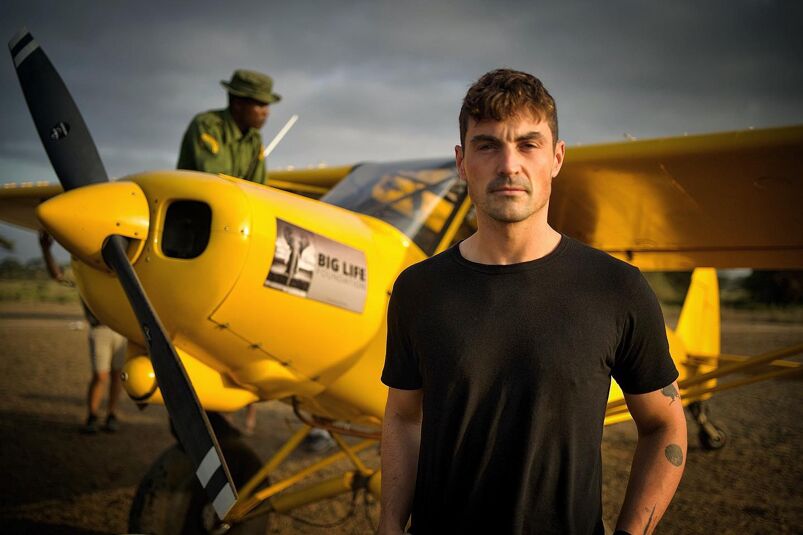
Do you have a favorite animal from pop culture that you love?
Oh, I loved Harry Potter. And I just really liked Buckbeak (the Hippogriff in Prisoner of Azkaban). When I was a kid, I had a hawk. I wish I could have ridden my bird and flown around like they did in it.
Plus, it bit the wanker, Malfoy! [laughs]
That’s right, yeah! Get rid of that Malfoy. What’s the strangest animal that you’ve seen someone have as a pet?
I have a friend in Guyana named Shannon. He’s an indigenous guy who lives in this little village in the middle of the jungle called the ubqari. He has this white-faced saki monkey called Magic that runs into their local shop and steals all the cigarettes and chews them up [laughs]. So I think Magic the monkey is probably the weirdest pet I’ve ever seen.
[laughs] All right. As a final question, which might be a weird one. But because we’re LGBTQ site, I’ve got to ask. Are there animals that are more prone to being gay than not?
Absolutely, oh my god! It’s something between 90 and 95 percent of giraffes exhibit homosexual tendency behavior.
Really?!
Yeah, absolutely. There are the bonobos, one of our closest living relatives, who have a behavior for the females called GG rubbing, which is a sort of trade. So, they’ll go and give sexual favors to one another for trades. For example, they might get some parasites taken off them, or a bit of food.
There’s hyenas, for example, who are so matriarchal, that the females are dominant. And they have so much testosterone that they have a clitoral extension that’s actually known as a pseudo penis because of that, because of their testosterone.
Whoa!
There are actually a huge number of animals that have different sorts of identities, related to gender or sexuality, all over the animal kingdom. For example, there’s numerous different animals around the natural world who can do incredible things like change gender depending on the numbers of one sex to the other in their environment. Yeah, there’s loads of gender bending, queerness… Absolutely. All of it in nature.
Ha! I’m just imagining the animal kingdom having their own Pride parade.
Oh my god, yeah. They do it every day. Nature is incredibly queer.
I love it, we need to see more of it!
Yeah, I would absolutely love to do a show about that, of queer animals around the world. That would be epic.
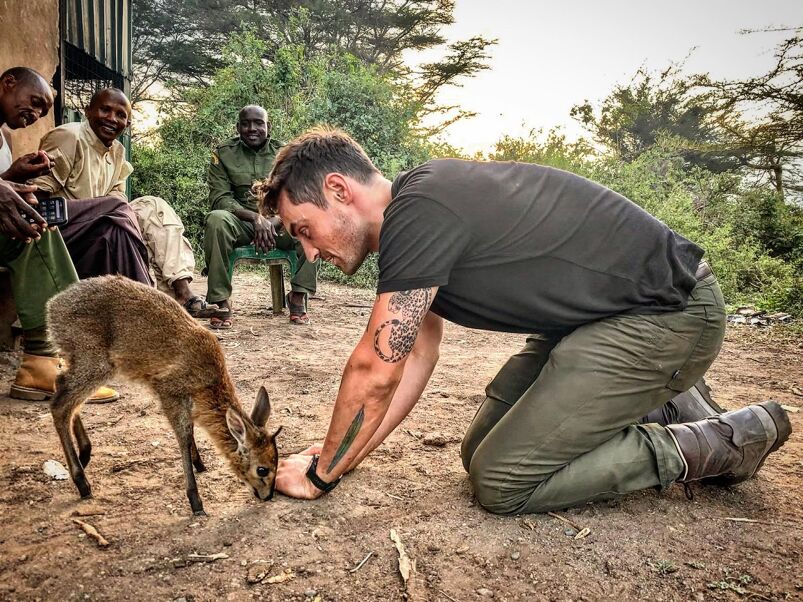




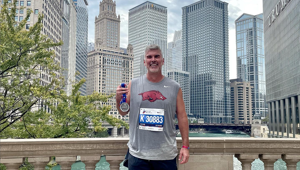
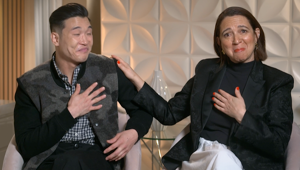

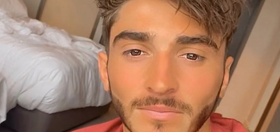


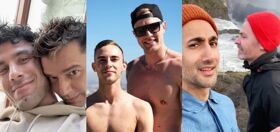

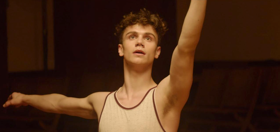
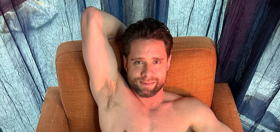
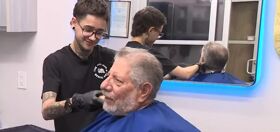
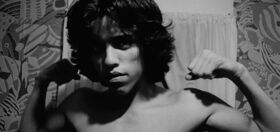



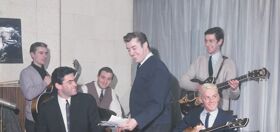
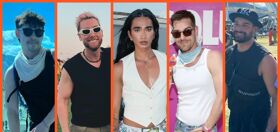
Pietro D
An Official Pride Parade for the Animal Kingdom……… Try and put that together!!!!!!!!!!
abfab
We already have! The Procession Of The Species. Big on the left coast from Vancouver down to SF.
Looki it up. It’s super hippie dippy and just a beautiful gathering to celebrate our relationships with the wild world.
abfab
A couple of requests to all. Leave the sharks alone. They are not play toys. I have more but I’ll leave it at that.
Invader7
Alright for Dan O’Neill shining a light into /onto a part of our world. Now maybe we’ll all appreciate and protect our world and all creatures in /on it !! BTW, Dan’s a quite attractive bloke. Just saying…